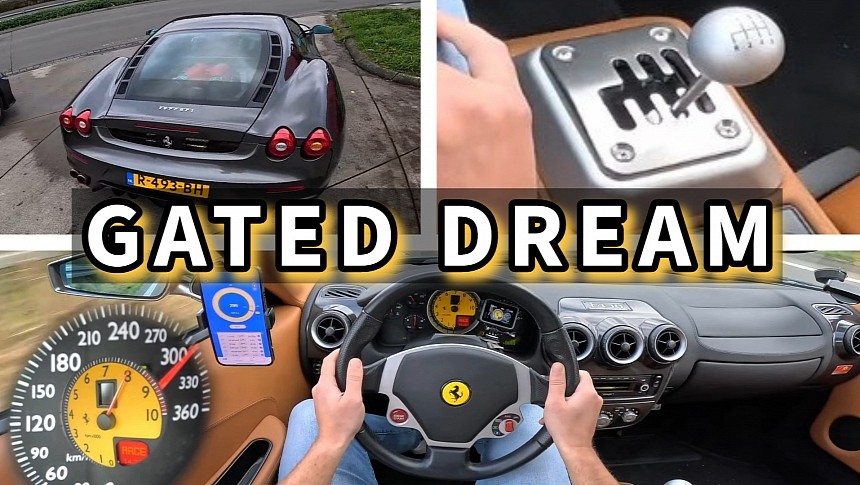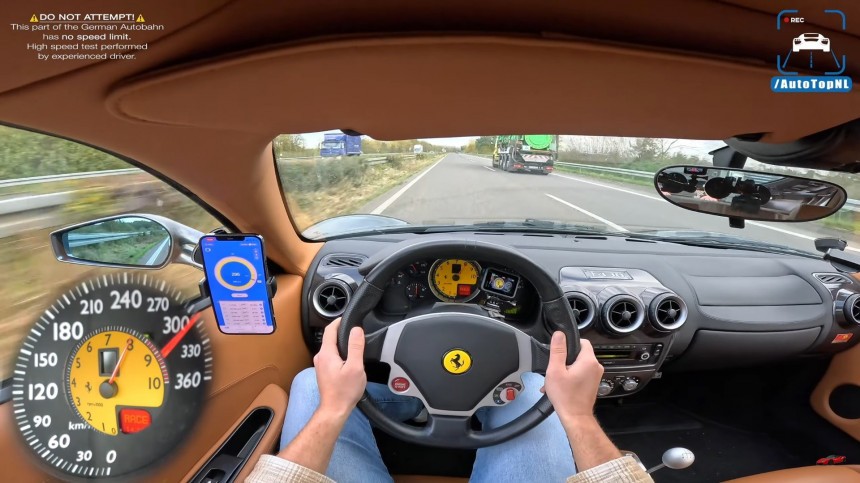We may be weeping about manual supercars in this day and age. Still, in a few years, we’ll probably be crying our lungs out for great naturally aspirated engines, too, with no electric trickery whatsoever.
But we all know where the automotive industry's next major stop is, so all we can do now is try and enjoy some of the most incredible machines ever made (if we can afford them) and not think about the future of the car as a whole.
Some might argue that the thrills provided by the Tesla Model S Plaid or the Rimac Nevera are simply unobtainable in something less powerful. But we beg to differ, as all you need is an excellent flat-plane crank engine hooked up to a gated manual transmission and rear-wheel drive to truly enjoy driving. Throw in an empty, twisty road, and you'll probably need a set of spare tires to drive back.
There are a few vehicles that tick these boxes, and the Ferrari F430 is one of them. Made from 2004 to 2004 as the 360's successor, it preceded the 458 and gave birth to a few special editions. Styled by Frank Stephenson in collaboration with Pininfarina, it features a timeless design and a great power unit mounted behind the seats in a longitudinal position.
The naturally aspirated 4.3-liter V8, whose displacement inspired the name of this great modern-classic supercar, produced 490 metric horsepower. That's 483 brake horses or 360 kilowatts. The thrust was rated at 465 Nm (343 lb-ft), and everything was channeled to the rear wheels. The transmissions of choice were the highly desirable gated manual or an automatic, both with six gears.
From a power standpoint, the F430 is nothing to write home about anymore. We're probably a few years away from having stock hatchbacks with more oomph, but none of them will be able to provide the same thrills on the go. Its straight-line performance isn't that impressive either, but it's definitely no slouch, with around four seconds required to hit the 100 kph (62 mph) mark and a 315 kph (196 mph) top speed.
In fact, a nicely preserved example can still hit its maximum speed relatively easily, as the video below shows. Mind you, the supercar in question didn't start life with a stick shift, as it was converted to three pedals, and this upgrade has certainly elevated its driving credentials.
The vehicle was taken on a top-speed run on a no-speed-limit section of the German Autobahn, and everything was filmed from a POV perspective. There are no weird comments; the only noises you'll hear are from the V8, wind, and tires. That said, get ready for almost 10 minutes of pure automotive perfection.
Some might argue that the thrills provided by the Tesla Model S Plaid or the Rimac Nevera are simply unobtainable in something less powerful. But we beg to differ, as all you need is an excellent flat-plane crank engine hooked up to a gated manual transmission and rear-wheel drive to truly enjoy driving. Throw in an empty, twisty road, and you'll probably need a set of spare tires to drive back.
There are a few vehicles that tick these boxes, and the Ferrari F430 is one of them. Made from 2004 to 2004 as the 360's successor, it preceded the 458 and gave birth to a few special editions. Styled by Frank Stephenson in collaboration with Pininfarina, it features a timeless design and a great power unit mounted behind the seats in a longitudinal position.
From a power standpoint, the F430 is nothing to write home about anymore. We're probably a few years away from having stock hatchbacks with more oomph, but none of them will be able to provide the same thrills on the go. Its straight-line performance isn't that impressive either, but it's definitely no slouch, with around four seconds required to hit the 100 kph (62 mph) mark and a 315 kph (196 mph) top speed.
In fact, a nicely preserved example can still hit its maximum speed relatively easily, as the video below shows. Mind you, the supercar in question didn't start life with a stick shift, as it was converted to three pedals, and this upgrade has certainly elevated its driving credentials.
The vehicle was taken on a top-speed run on a no-speed-limit section of the German Autobahn, and everything was filmed from a POV perspective. There are no weird comments; the only noises you'll hear are from the V8, wind, and tires. That said, get ready for almost 10 minutes of pure automotive perfection.













